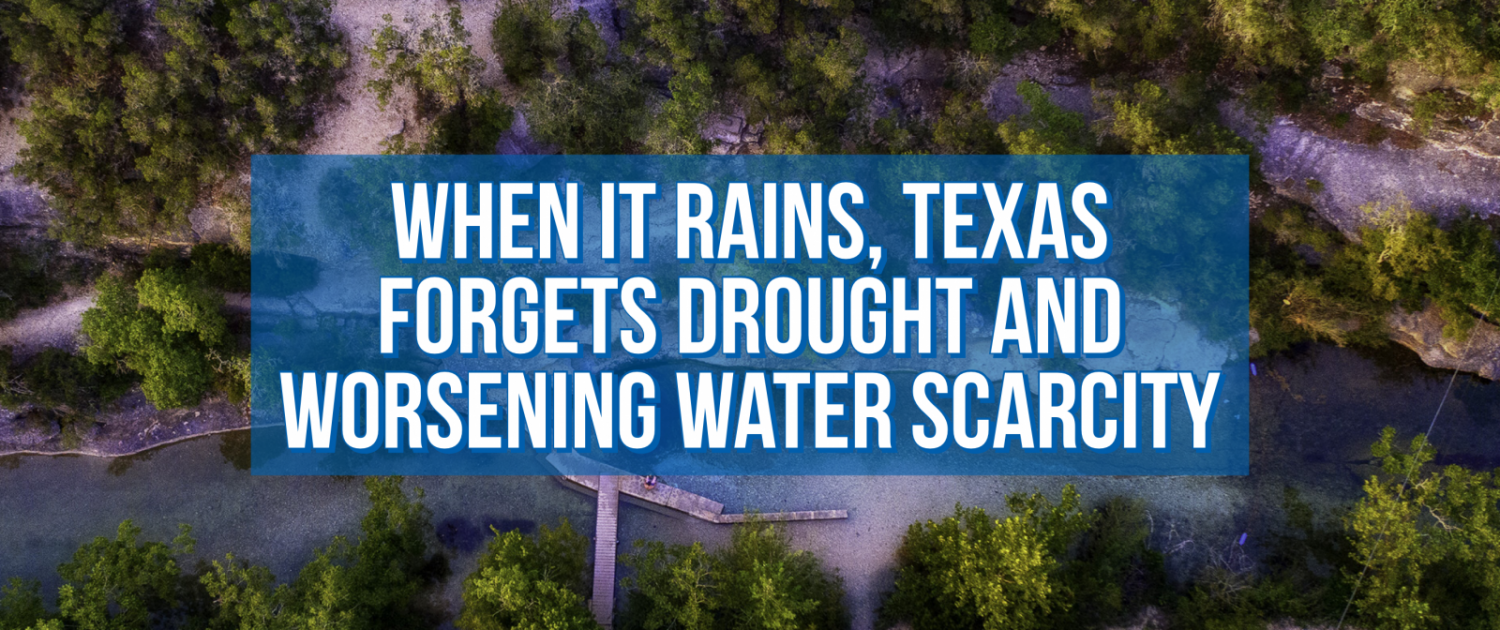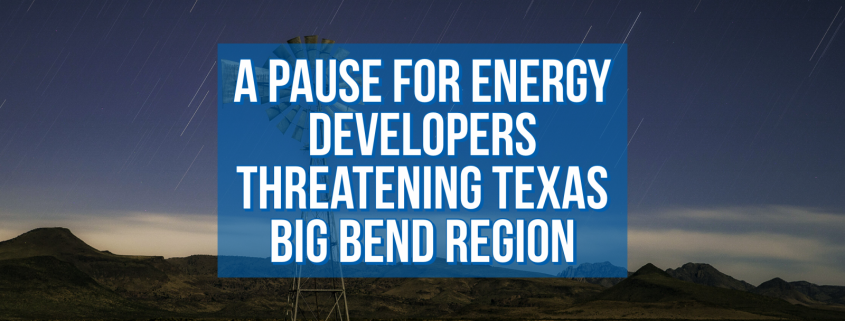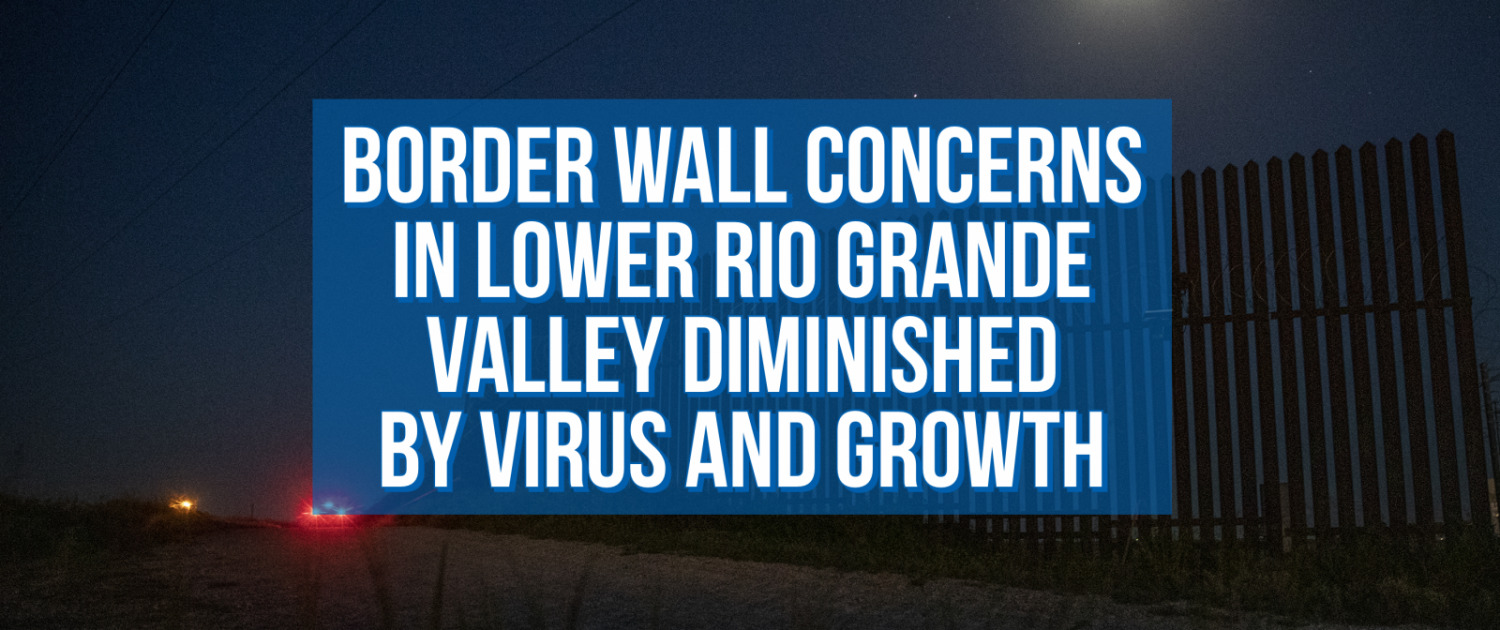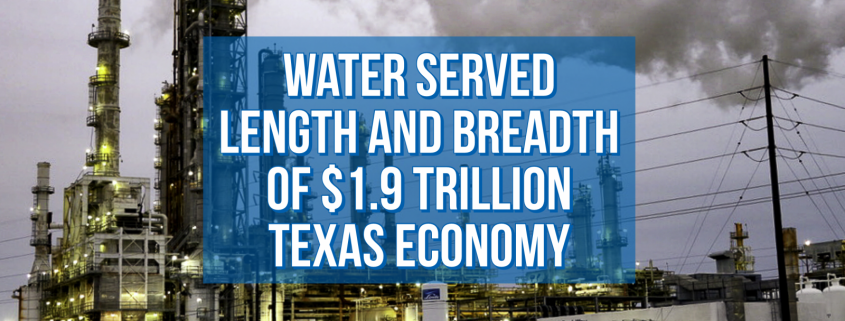The story of Texas is the state’s devout allegiance to the principle that mankind has dominion over nature. In 2020, the pandemic, climate disruption, and ever-present challenges with water supply and use are writing a much different story of vulnerability to nature’s bullying, and to government’s uncertain capacity to adjust.
Circle of Blue presents a five-part series on the consequences of rising development and shrinking water supplies in Texas. There’s a mismatch between runaway growth in the face of tightening constraints on the quantity and quality of water. The “Water, Texas” project examines crucial aspects of the state’s resource challenges. They include demand and supply in the Hill Country, energy development risks to the Big Bend region, and water innovations in three major Texas cities. Circle of Blue also looks closely at how the new border wall intrudes in the ever-present civic conversation about water supply and growth in the Lower Rio Grande Valley, and illuminates the influence of water and drought on the Texas economy. Water, Texas is funded by the Cynthia & George Mitchell Foundation. Its intent is to inform citizens and policymakers, and help influence investments and new practices to assure a drying Texas has adequate supplies of clean freshwater.
the consequences of the mismatch between runaway development and tightening constraints on the supply and quality of fresh water in Texas. The Water, Texas project provides close examinations of crucial aspects of the state’s resource challenges: demand and supply in the Hill Country, energy development risks to the Big Bend region, water innovations in three major Texas cities, how the new border wall intrudes in the ever present civic conversation about water supply and growth in the Lower Rio Grande Valley, and the influence of water and drought on the Texas economy. Water, Texas is funded by the Cynthia & George Mitchell Foundation. Its intent is to inform citizens and policymakers, and help influence investments and new practices to assure a drying Texas has adequate supplies of clean fresh water.
Publication Schedule
After the Pandemic, Soaring Population Growth, Industrial Development Will Again Overwhelm Planning and Water Supply
Publishing August 3, 2020
“Texas does not understand shortages,” said a research director at Texas A&M University, “Texas is so big we’ve had a hard time coming to grips that resources are finite. We really never had to deal with that. Frankly, we’re reaching that point.” The mighty economy of Texas rides upon three major sectors: agriculture, fossil fuels and real estate development. All three are very thirsty engines in a warmer, less predictable climate.
How does a state “where everything is bigger” find room within the limits of its water?
Opportunity to Protect A Way of Life Confronted by Oil and Clean Energy
Publishing August 10, 2020
Residents of the Big Bend region of West Texas saw drilling rigs and energy installations draw closer to their rugged and majestic landscapes near the Rio Grande. The year 2020 began as a boom time for oil and gas, as well as for wind and solar generation. Locals feared that all the infrastructure and accouterments of those industries threatened the water and way of life with “energy sprawl.” They’d seen it happen just north of them, and they were desperate to protect the grasslands, viewsheds, dark skies and places for both wildlife and humans to roam.
The challenge for the Big Bend region: how to preserve the last wild mythic place in Texas when the state’s laws and economics lean heavily in favor of energy development.
Austin, El Paso, and San Antonio Prepared for Growth and Drought
Publishing August 17, 2020
Texas is a state of boundless economic ambition, but it is regularly disciplined by deep droughts. There, water is taught by thirst. That’s especially true in three large Texas cities that are taking bold steps in water planning, technology, and use. With growing populations, rising temperatures and increasingly uncertain water supplies, cities are where the water shortages will be felt most keenly.
The big push is on finding ways to make less water go farther, and better. As the assistant director of Austin Water put it, “there’s no one silver bullet.” But with uncommon focus, Texas cities have their eyes on the target.
Trump Administration Overrides Longstanding Conservation Mission
Publishing August 24, 2020
President Trump said the Lower Rio Grande was the hotspot for illegal immigrants and contraband, and that installing his wall was essential to national security. Most people there didn’t agree. They said the wall would divert river flows, hurt wildlife and be an ugly waste of money.
Residents resisted the administration’s attempts to seize private property for the wall, and were unnerved by rollbacks of environmental reviews and weakened protections for wildlife and habitat. The pandemic has pushed the wall to the side of the civic discussion, where it stands in the shadow of critical issues affecting the Lower Rio Grande Valley: population growth and water supply.
Growth in Wet Years, Economic Distress in Dry Ones
Publishing August 31, 2020
Texas has the second largest economy of the United States, and the ninth largest in the world, approaching $2 trillion annually. As one researcher put it, “Water is the economy in Texas. It drives everything, particularly as you get less of it.” A recent study quantified the effect of proximity to water in terms of home and land values in one Hill Country town.
This glimpse into a tiny region of a mammoth state helped define the critical impact that adequate supplies – and harmful shortages – exert on the economic well-being of all of Texas. If water has a proven value in Texas, why then does it defy the classic market theory of supply, demand and pricing? And if water security is the wellspring of economic health, how is Texas addressing its growing vulnerability?







